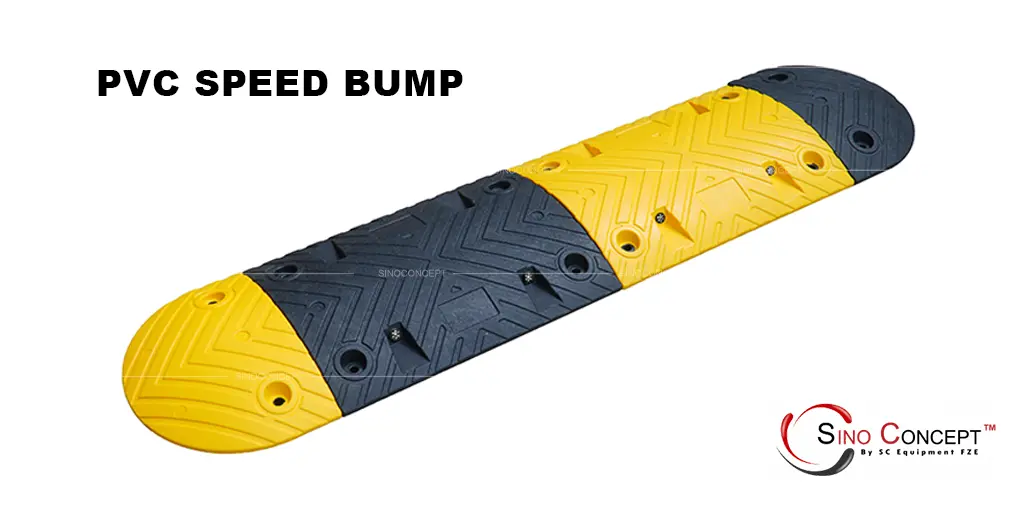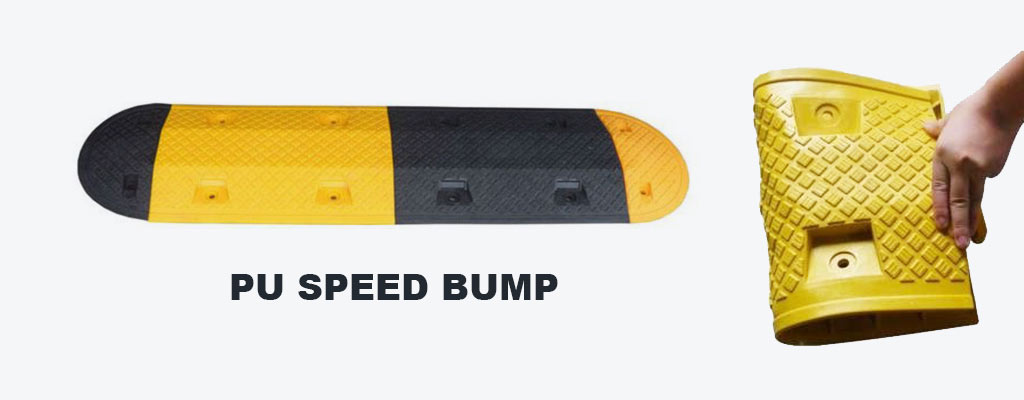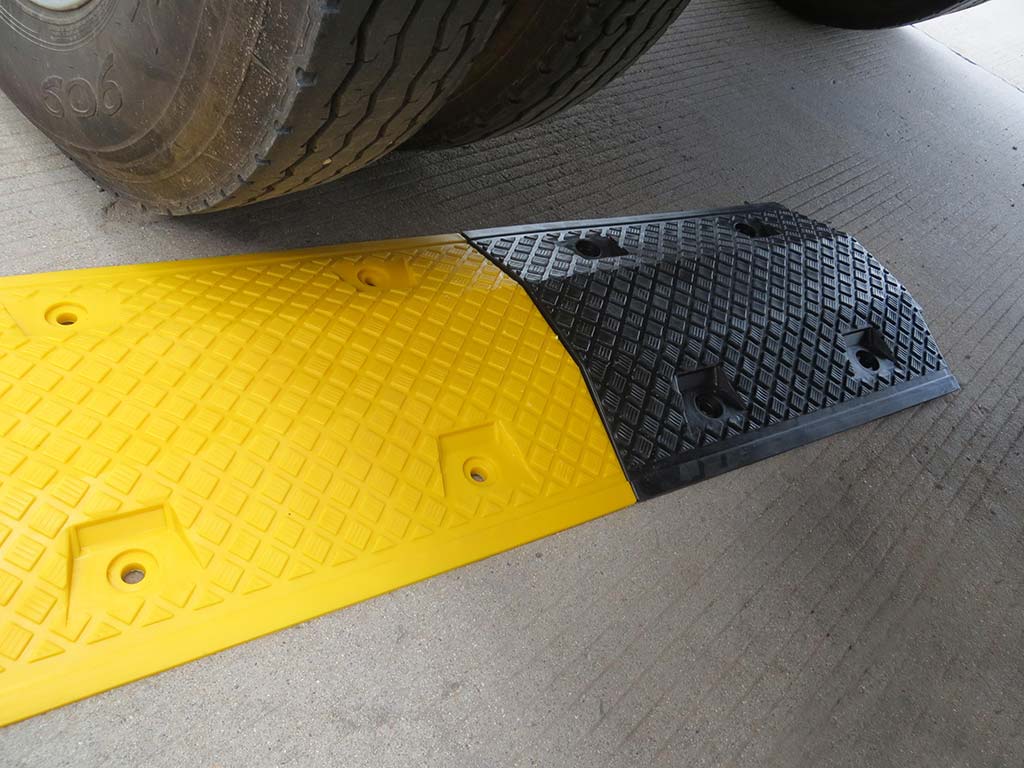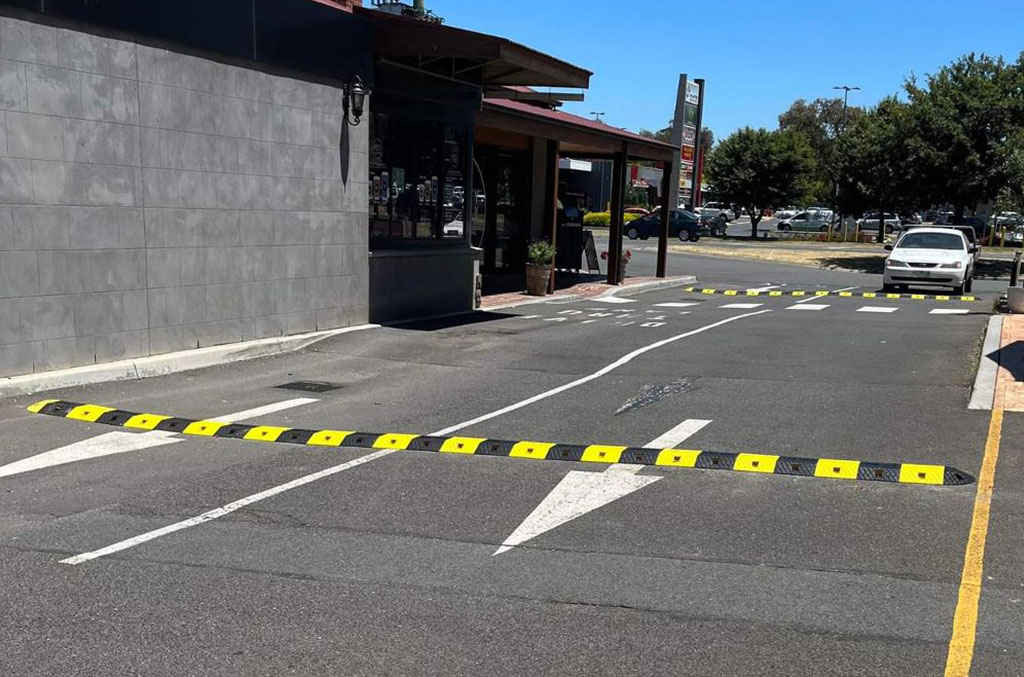Discover 3 plastic speed bump types!
Speed bumps are a speed reduction tool people use in a pedestrian zone and other areas where vehicles and pedestrians interact closely daily.
They can be installed in various places, depending on your safety needs. There should be a speed limit sign showing the driver, like a cyclist, motorist, etc., about the presence of a speed bump.
There are many kinds of materials for speed bumps. Plastic speed bumps are popularly used all over the world. They are usually made up of three common types of plastic: PVC, PU, and PE.
This article explains all that you need to know about these forms of plastic speed bumps.
Do you want to know more about this topic? We also have an article talking about top 5 materials to manufacture speed bumps.


Discover here our complete selection to purchase Speed Bumps!
Facts you need to know about PVC speed bumps!
Polyvinyl chloride plastic (PVC) is the third most commonly produced plastic polymer. Around 40 million tons of PVC are produced each year to construct different plastic products such as pipes, fittings, tubes, ceiling tiles, hoses, plastic cable coatings, speed bumps, etc.
It is a dense material, having a 1.4 specific density. It means recycled PVC speed bumps can withstand large vehicles such as buses and trucks without damage.
PVC has two forms – one is called rigid PVC, while the other is called flexible PVC. Rigid PVC makes speed bumps and is considered a very sturdy material. Its high tensile strength also makes it highly durable.
The tolerable temperature range for PVC material is -20°C to +60°C. So, you can use recycled PVC speed bumps in all sorts of environments without hesitation or trouble.
Its resistance to acidic materials shows PVC can resist the effects of many hazardous chemicals a motor vehicle releases.
PVC speed bumps are usually more economical than PU or PE speed bumps.

Things you need to know about PU speed bumps!
The other common form of polymer used to synthesize speed bumps and other traffic-control devices is called polyurethane (PU) plastic. It is well known for its different resistant properties, such as temperature resistance, abrasion resistance, and chemical resistance.
PU is a versatile material used to make many different products, such as speed bumps, speed humps, speed cushions, traffic cones, tubes, cables, etc. It can tolerate temperatures ranging from -40°C to +65°C.
Therefore, you will not have to worry about the effect of environmental temperature on the performance of bumps.
PU speed bumps are effective traffic-management tools that can slow down speeding vehicles in front of traffic signals like red lights, traffic signs, and parking signs to make drivers follow these signs.
They also reduce the acceleration of cars in a slow zone area, work zone, parking space, or a neighbourhood where pedestrians and vehicles are found close to each other.

You have already read a good part of this article, 👀
We've
got the impression that you like it. 🙂
👇🏻
IF YOU ARE LOOKING TO WORK DIRECTLY WITH A MANUFACTURER,
FEEL FREE TO CONTACT US. WE ARE VERY HAPPY TO HELP!
Secrets you need to know about PE speed bumps!
Polyethene (PE) plastic is the most abundantly used form of plastic. It is primarily used to make packaging items. PE speed bumps are popularly used.
Like the above-mentioned forms of speed bumps, they are also resistant to temperature shifts, chemicals, pressure, and scratches.
According to the traffic data presented by the Federal Highway Administration, speed bumps help reduce collisions between vehicles, significantly reducing road traffic accidents.
Due to the high durability of PE material, PE road bumps are found before stop signs, speed limit signs, and traffic signals on roads that have a high traffic volume to diminish traffic speed.
Some plastic speed bumps have reflective tape that makes them recognizable and visible in bad weather conditions and at night, even when there is no street light. Some have their entire surface reflective. These calming traffic measures help save many lives every year.

More about plastic speed pumps
Plastic is one of the most popular speed bump materials. Plastic speed bumps prevent vehicular collisions by imposing a speed limit and making bicyclists, motorists, and drivers of other vehicles drive below 20 miles per hour (mph).
There are multiple benefits of plastic speed bumps. Some of these benefits include:
- Plastic is lightweight, making installing, transporting, and handling speed bumps easier for the traffic-engineering community.
- Plastic is a durable and sturdy material. Install plastic speed bumps on a road intersection before a pavement, curb, pedestrian crossing, crosswalk, sidewalk, speed sign or signage and enjoy its benefits for several years.
- It is a low-maintenance material and resistant to chemicals. It can tolerate different weather conditions. Plastic speed bump paint also does not fade easily. You will not have to invest in its maintenance much.
- Plastic can be moulded into various shapes, making it easier for road bump manufacturers to design speed bumps of different shapes, such as circular, square, and regular speed bumps.
- Compared to concrete and asphalt, it has a less damaging impact on vehicles, including emergency vehicles, buses, cars, etc. It tends to sustain damage even before a traffic vehicle is damaged.
- You can install it in a place, but due to the change of plans, you can easily detach and reinstall it anywhere of your choice.
- Some plastic speed bumps are designed to help drainage and protect wires.
Different kinds of plastic differ based on their chemical composition and physical characteristics. Depending on the type of plastic, speed bumps are classified into three types: PVC, PU, and PE speed bumps.

More knowledge about speed bumps
A speed bump is a speed control device. It has vertical deflection that forces speedy vehicles to reduce their speed to reduce the impact of the device on the vehicle.
It is chiefly used on roadways, parking lots, and city streets before stop signs, crossings, and pavement markings to provide pedestrian and traffic safety.
A speed bump-like structure is reported to be first used in New Jersey.
However, it was in 1953 when Arthur Holly invented a device he named “traffic control bumps.” He invented it when he noticed the high speed of motorists who passed Brookings Hall. The first speed bump in any European country is believed to have been installed in 1970.
Different materials are used to construct traffic calming devices, such as speed humps, cushions, and tables. Popular examples of these materials include recycled plastic, rubber, asphalt, concrete, and steel.
Each material is considered suitable for a particular situation or location. Municipalities and the transportation department usually decide where to install speed bumps and speed humps according to traffic volume and safety needs.

Conclusion
Plastic speed bumps in the road are called sleeping policemen. They calm traffic in a driveway, road cut-through, roundabout, traffic barriers, and roadside for street and highway safety.
They have a raised section that forces vehicles to decrease their speeds. Traffic or road signs should be before them to act as warning signs for drivers.
Plastic speed bumps are available in three different forms. These include PVC, PU, and PE plastic. They have many similarities and a few differences as well. Each material has its own chemical characteristics, which makes it suitable for a specific location.
Plastic speed bumps can also act as cable protectors, as some have cable channels inside them. If you want to increase safety in your driveway, parking lot, and street, you should install a speed bump in the right location.
👇🏻
IF YOU ARE LOOKING TO WORK DIRECTLY WITH A MANUFACTURER,
FEEL FREE TO CONTACT US. WE ARE VERY HAPPY TO HELP!




















